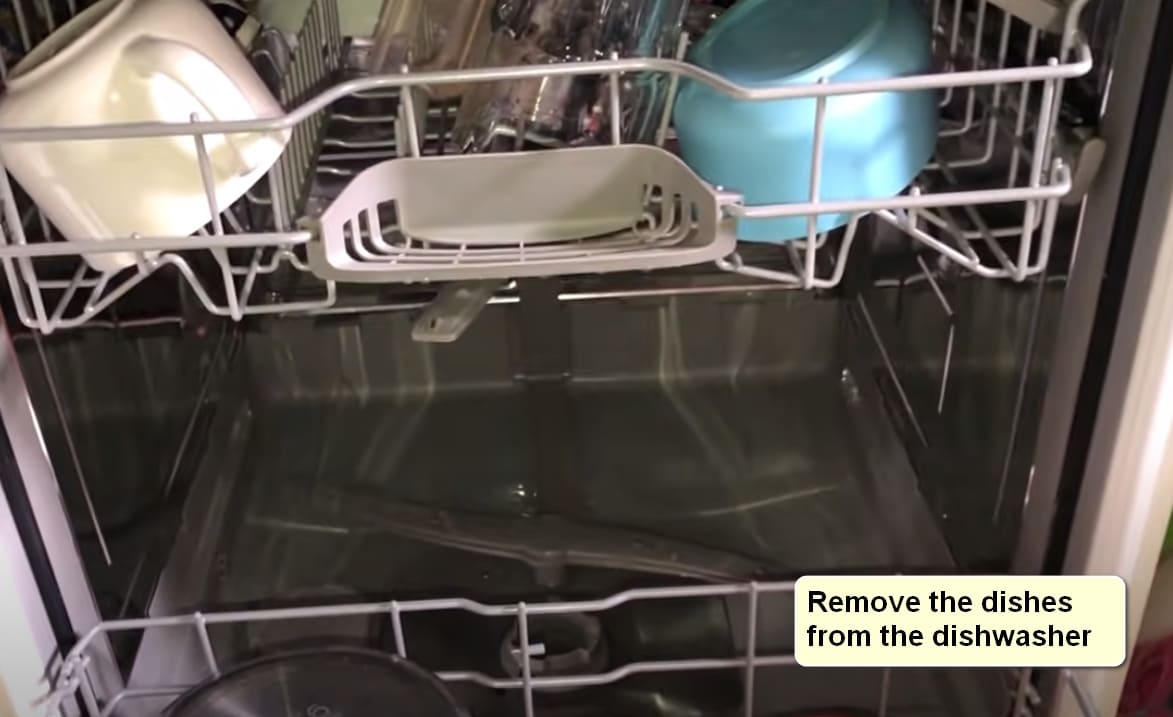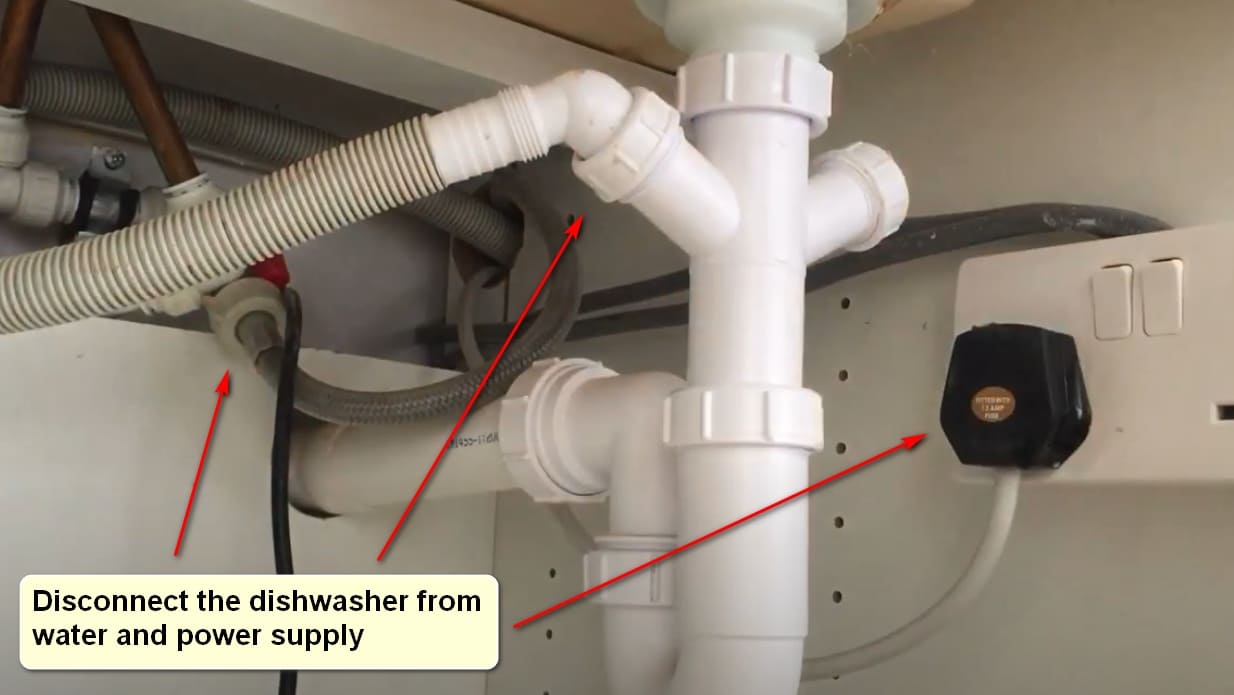
You may not think of a dishwasher as something that usually needs to be overwintered, and in most cases, you’d be right. However, if you store your dishwasher in an unheated area, you will need to properly prepare it for the winter months.
A dishwasher without winter conditions can be seriously damaged if left in freezing conditions. To properly prepare your dishwasher for winter, you need to make sure it is completely drained and washed, and fill it with antifreeze.
In this article, we’ll show you how to winterize your dishwasher and share with you some other tips and information you may need to keep your dishwasher running all year round.
Why prepare the dishwasher for winter?
Under normal conditions, it is not necessary to prepare the dishwasher for winter, but it is necessary if you plan to leave the dishwasher in freezing temperatures at any time. For example, if your dishwasher is in a garage or summer home with no insulation, you should definitely make sure it is winter-prepared.
You need to winterize your dishwasher because any water that is still inside of it can seriously damage the system if it freezes. If your home has ever had pipes bursting in cold weather, then you know exactly how much it sucks.
As for why your pipes are at risk of bursting when the water freezes inside them, the ice itself is not the problem, as you might expect. Rather, it is due to an increase in the amount of water due to the presence of ice.
When water turns into ice, the water molecules expand. However, this alone is not enough to burst the pipes. Instead, the ice pushes any unfrozen water onto a closed tap or valve to which a pipe is connected.
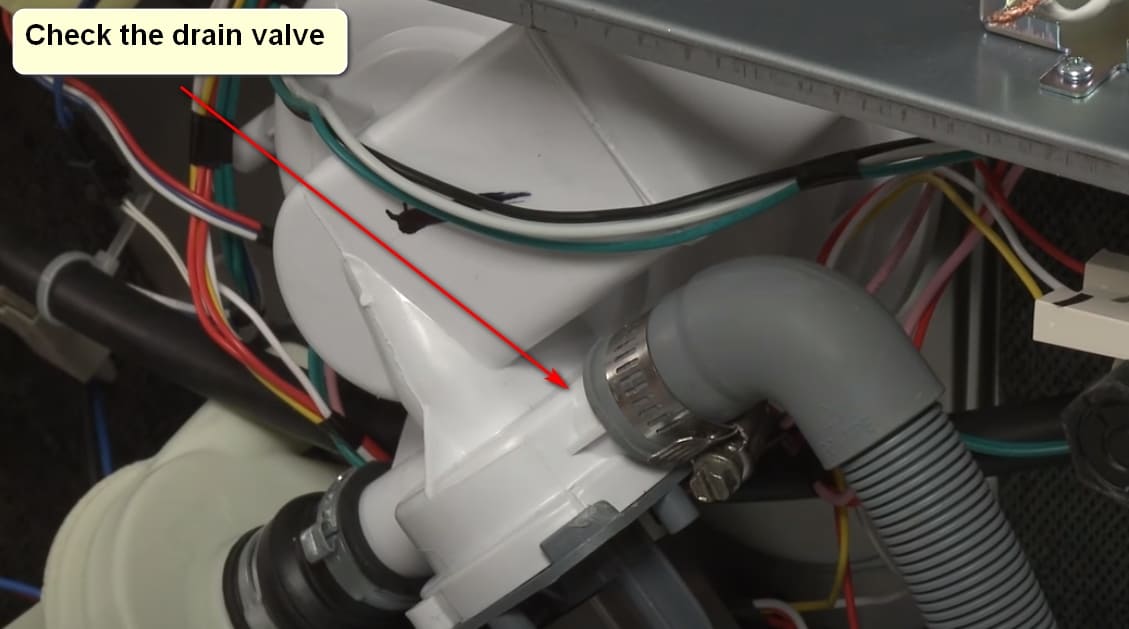
As ice forms, the unfrozen water is subjected to tremendous pressure between the ice and the faucet / valve. Eventually, pipes burst due to this pressure, most often in places where there is very little ice.
As a rule, there is a risk of rupture only in the pipe sections after the ice plug. Upstream pipe sections are not at this risk because water does not trap and can usually return to its source if it encounters a blockage.
Preparing the dishwasher for winter
Now let’s take a look at how to properly prepare your dishwasher for winter. The process itself isn’t overly complicated, but you definitely need to get it right for it to really work.
If you do everything right, it will take no more than a few hours to prepare the dishwasher for winter. Here’s what you need to do:
1. Prepare the dishwasher.
Before you start preparing your dishwasher for winter, you need to prepare it. To do this, you need to make sure that your dishwasher is completely empty and the inside is clean.
First, remove any dishes or utensils that are still in the dishwasher.
Remove the top and bottom racks and cutlery basket.
Then wipe the interior surfaces with a damp cloth and a little cleaning solution (or you can run the dishwasher self-cleaning cycle, if available).
2. Disconnect the dishwasher from water and power supply.
Next, you need to disconnect the dishwasher from the water and electricity source. You need to turn off the water supply so that there is no water left in the dishwasher in winter, and you need to disconnect the power supply to safely finish washing the dishwasher.
To turn off the water supply to the dishwasher, find the water supply in the house and turn it off completely. You may have to drain all of your pipes if your home is not winter-prepared, so take this opportunity to turn on all the taps in your home and flush all the toilets until your pipes are as empty as possible.
You should also run the chute for a minute or so as there is a good chance your dishwasher and chute are connected to the same plumbing.
Now disconnect the water supply hose from the dishwasher and drain as much water as possible. Then disconnect the dishwasher drain hose from the sink drain and do the same.
It is recommended that you have a bucket or pot handy when disconnecting these hoses so that water does not spill all over the place and create a mess. When you’re done, you can reconnect the supply hose to the dishwasher and the drain hose to the sink.
3. Thoroughly clean the dishwasher.
Now that you’ve unplugged the dishwasher and drained all the water, it’s time to do a little deep cleaning. This detail may seem too rough, so we recommend having dishwashing gloves on hand.
Under the dishwasher spray arms, you should see a small cylinder sticking out from the bottom of the dishwasher. This is a cylindrical filter and you will have to remove it to clean it.
To remove the filter, simply grasp it firmly and turn it counterclockwise. This will free it from the base of the dishwasher. Pour out any food stuck in the filter, and if you have excess water, quickly rinse the filter. Then reinstall the filter.
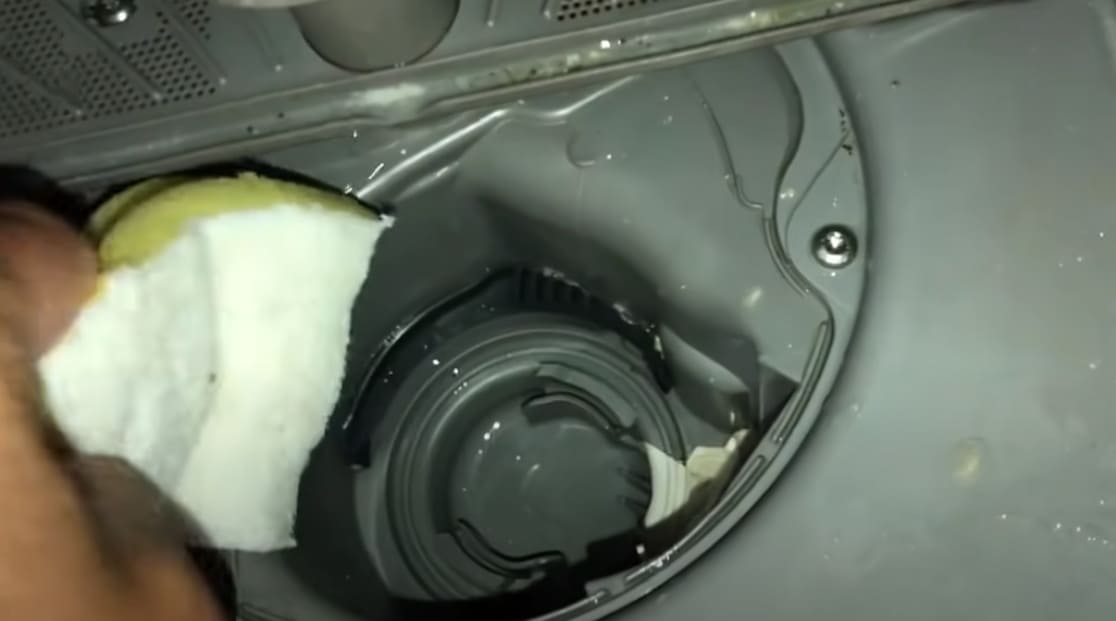
Then do the same for the centrifugal filter and the pre-filter in your dishwasher. Refer to your dishwasher manual for details on where these filters are located and how to remove them; The location of these filters can vary depending on the type of dishwasher, and some of these filters may be under the plate, which you will need a screwdriver to remove.
Now wash the tray of your dishwasher. The sump is usually located next to the cylinder filter and is used to collect water for the dishwasher pump. Food can get stuck in the sump, and if enough food gets stuck inside, it will clog the sump. Use your fingers to pick up any debris you find in the pallet (dishwashing gloves really come in handy here).
Finally, check the drain valve to make sure there are no food debris inside that could clog it. Again, the location of the drain valve will vary by dishwasher model, so refer to your user manual to find it.
Once you find it, remove it from the dishwasher by unscrewing it. Make sure there are no food debris stuck inside, and if there is any, rinse it out.
At this point, your dishwasher should be completely drained and washed!
4. Add antifreeze.
Now that your dishwasher is ready, it’s time to add antifreeze. Antifreeze will remain in the tube of the entire dishwasher and prevent the remaining small amount of water from freezing.
First, you need to find the right antifreeze. Since you add it to the dishwasher, where you will obviously be cleaning the dishes and utensils you use with your meals, you will need non-toxic antifreeze.
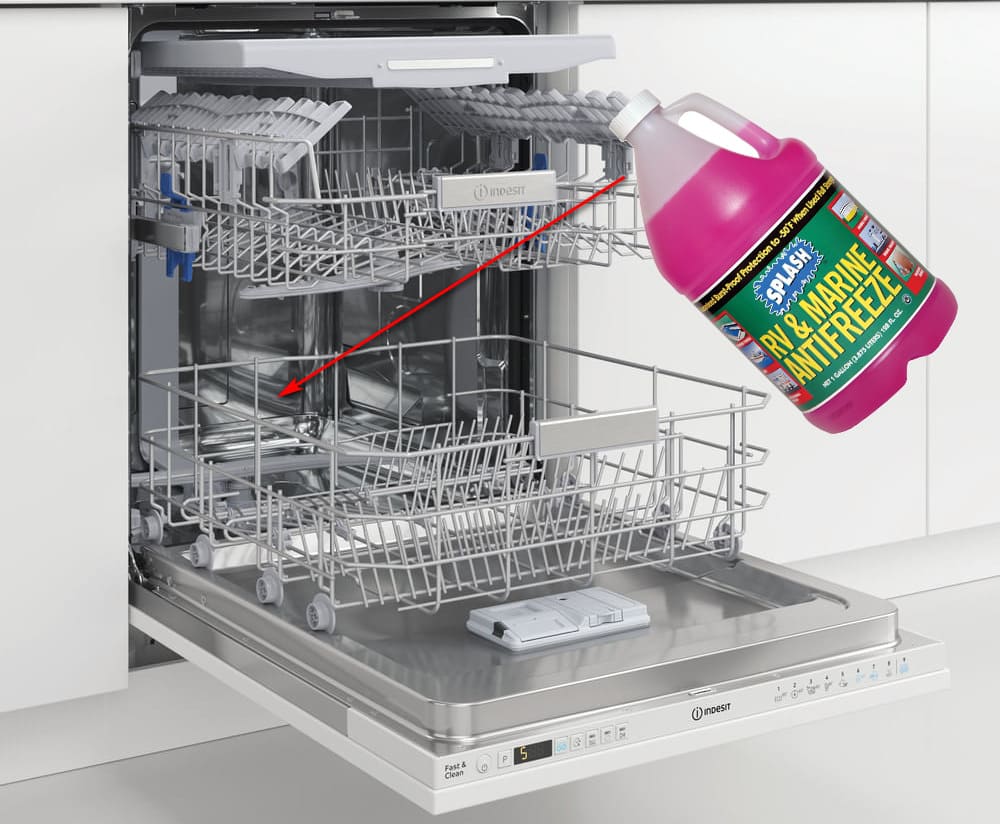
The best antifreeze for this purpose is RV antifreeze, which is designed for RV plumbing systems. This type of antifreeze uses propylene glycol as the main active ingredient.
When you have the antifreeze you need, start by pouring about half a gallon of it into the dishwasher bowl. Then reconnect the dishwasher to the power source and start a short wash cycle.
This will distribute the antifreeze to the pipes in the dishwasher. Wait a few minutes until you hear the dishwasher start the rinse cycle, then unplug the dishwasher again to stop it. If you’ve done everything correctly, the insides of your dishwasher should be filled with antifreeze.
After you turn off the dishwasher again, you can leave the dishwasher door open while you are away to improve air circulation inside and prevent mold or unpleasant odors. Also, just in case, it is better not to disconnect the dishwasher from the mains.
5. Putting the dishwasher into operation
When you return to your summer home or wherever the winter dishwasher is, you will not be able to use the dishwasher right away. Although dishwasher antifreeze is supposed to be non-toxic, you really shouldn’t expose your dishes to an antifreeze bath.
To drain the antifreeze from the dishwasher, turn on the water supply to the house again and run the empty dishwasher for three to four complete wash cycles. For the first wash cycle, you can add a little detergent to make sure that all the antifreeze inside is flushed out.
That’s pretty much everything you need to know about preparing your dishwasher for winter! In general, you should avoid storing any of your electrical appliances below 40 degrees Fahrenheit or so, as cold temperatures can sometimes damage electrical components.
However, if you need to leave the dishwasher in subzero temperatures, winterizing it properly will help protect it and keep it working while not in use.

